In the Philippines, the Bureau of Immigration (BI) implemented the Alien Certificate of Registration Identity Card (ACR I-Card) as a proof of identity for foreign nationals residing in the country. The ACR I-Card has an embedded computer chip with biometric security functions that manage, store, and process the crucial data of the cardholder. Moreover, it can be updated electronically, ensuring that the holder’s identity record, registration, and immigration status remain up-to-date.
Who is Required to Apply for an ACR I-Card?
The Bureau of Immigration (BI) issued an ACR I-Card to all registered foreign nationals whose stay in the Philippines has exceeded fifty-nine (59) days. Whether a foreign national is an immigrant visa holder or non-immigrant visa holder, including the holders of Temporary Visitor’s Visa, they are required to obtain an ACR I-Card. Apart from visa extension, obtaining an ACR I-Card allows its holder to stay in the country for a longer period of time after the initial fifty-nine (59) days.
Who is Exempt from Processing their ACR I-Card Personally?
Personal appearance is required for ACR I-Card holders. They must present the original copy of ACR I-Card or the paper-based card along with their passport. The Bureau of Immigration (BI) no longer allows authorized representatives to submit the annual report on behalf of the ACR I-Card holder.
However, some individuals are exempt from this requirement:
- Individuals who are under 14 years old or over 60 years old;
- Individuals who are mentally or physically disabled, must present their valid Persons with Disabilities (PWD) ID;
- Pregnant women; and
- Foreign nationals with a medical condition, must present a medical certificate.
What is the Corresponding ACR I-Card Color Assignment of Each Visa Category?
In the Philippines, the ACR I-Card has various color codes that represent each type of visa category. Understanding these color codes is essential in order to know what type of visa is suitable for them, which are as follows:
|
Visa Category |
ACR I-Card |
Visas |
| Permanent Resident |  |
13 Quota 13(a) 13(b) 13(c) 13(d) 13(e) 13(g) RA7919 EO 324 PD 730 MCL-07-021 MCL-08-003 Permanent |
| Native Born | 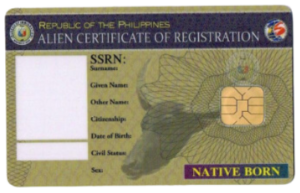 |
Native Born |
| Special Non-Immigrant |  |
47(a)(2) non exempt 47(b) RA 8756 PD 1034 EO 758 PD 1623 SVEG |
| Worker | 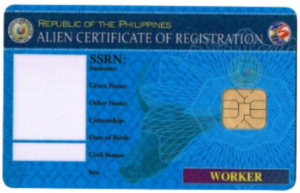 |
9(g) Commercial Missionary 9(g) Missionary |
| Probationary Resident | 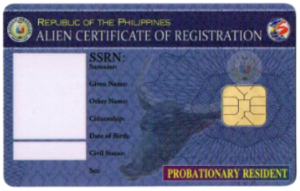 |
13(a) Probationary MCL-07-021 Probationary Temporary Resident Visa (TRV) |
| Voluntary Registrant | 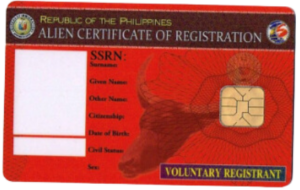 |
Balikbayan Tourist less than 59 days 47(a)(2) exempt All Economic Zone Visas SIRV SRRV |
| Tourist | 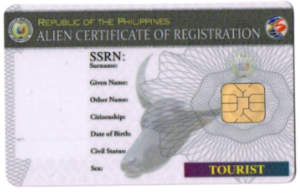 |
Temporary Visitors who will stay/have stayed for more than 59 days SSP SWP |
| Student | 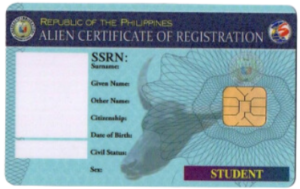 |
Sec 9(f) |
| Treaty Trader | 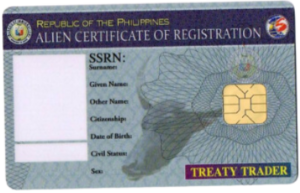 |
Sec 9(d) |
| Gratis | 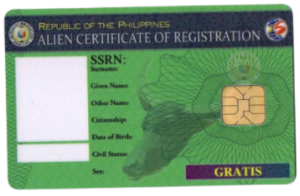 |
RA 7837 (Veterans) C.A. 613, 47 (b) |
Pursuant to Operations Order No. SBM-2015-017-A, the gratis card shall be free for issuance, renewal and reissuance. However, the applicant must pay a fee of USD $20 for a request of issuance due to misspelled or incomplete information.
What is the Purpose of ACR I-Card Color Coding?
On July 16, 2015, the Bureau of Immigration (BI) introduced a new design for ACR I-Cards, incorporating specific colors designated for particular visa categories. BI Commissioner Siegfred Mison stated that the new design aims to facilitate immigration processing at both Philippine airports and the BI offices. Additionally, the color codes serve as a guide to identify various types of visas. Visa holders may not bring any documents to support the issuance of their ACR I-Cards since all of their important information is encoded in the microchip. This information can be accessed at Philippine airports through the updated Border Control Information System. The ACR I-Card also has security features designed to prevent fraud.
How to Process an ACR I-Card Registration?
To process an ACR I-Card registration, the applicants must follow these procedures:
- Fill Out and Submit. Applicants are required to fill out and submit the ACR I-Card application form, which can be found on the official Bureau of Immigration (BI) website.
- Secure an OPS. Applicants must proceed to the Alien Registration Division (ARD)’s counter and secure an Order Payment Slip (OPS).
- Pay the Fees. Applicants shall pay a fee of USD $50 or approximately PHP500.00, and present the duly issued OPS at the counter.
- Data Capture. After payment, applicants are required to have their data captured, including their picture, fingerprint and signature.
- Verification. Applicants shall submit the necessary documents to the ACR I-Card Committee for verification. If verified, the issuance of their ACR I-Card will be endorsed.
- Claim the ACR I-Card. On the date specified on the claim stub, applicants can collect their ACR I-Card at the ARD. Note that the ACR I-Card is only valid for one (1) year.
What Will Happen if I Overstay in the Philippines Within the Given Period?
Any registered foreign nationals who fail to comply with the provisions of BI Memorandum Circular No. RADJR-13-001 must pay an administrative fine of PHP500.00 for each month or partial month of delay, with the total amount not exceeding PHP2,000.00. Additionally, foreign nationals with a paper-based ACR I-Card may be considered improperly documented and may face action under the pertinent provisions of the Immigration Act of 1940, also known as the Alien Registration Act of 1950, both as amended.
Need further information and assistance regarding Alien Certificate of Registration Identity Card (ACR I-Card)? Talk to our team at Duran & Duran-Schulze Law in Bonifacio Global City, Taguig, Philippines to know more about the requirements and process. Call us today at (+632) 8478 5826 or +63 917 194 0482, or send an email to info@duranschulze.com for more information.





2 Responses
How much is it to renew my visitor iCard please.
Good day, Phil!
Thank you for reaching out to Duran & Duran-Schulze Law.
To provide you with an accurate and detailed response regarding ACR I-Card renewal, our team will reach out to you via your provided email.
You may read this blog to learn more about renewal of ACR I-Card in the Philippines: https://duranschulze.com/navigating-the-renewal-of-acr-i-card-in-the-philippines/
For urgent assistance, you may contact us at (02) 8478 5826 or +63 917 194 0482, or email us at info@duranschulze.com
We’d be glad to assist you.